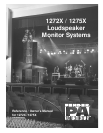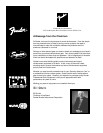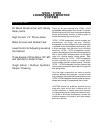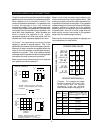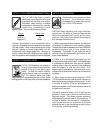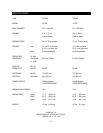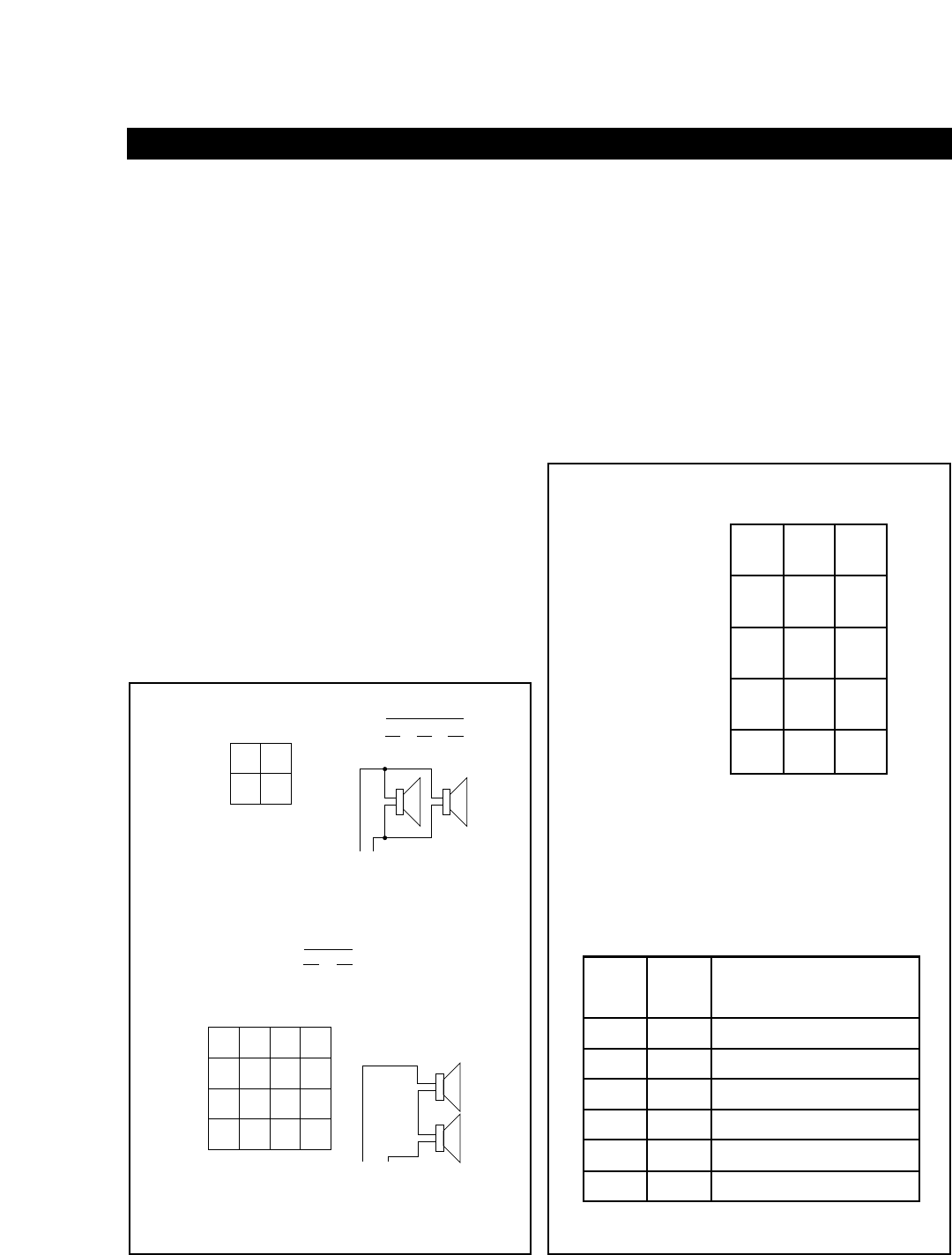
Parallel
or
series
are the two basic ways which multiple
speakers can be connected to a single power amplifier.
When speakers are connected in parallel, their
combined impedance decreases. For speakers wired
in series the opposite is true, their combined
impedance increases. Thus, when speakers are wired
in series, higher impedance speakers in the series draw
more power from the amplifier than do speakers in the
series with lower impedances. When speakers are
wired in parallel, the opposite is true. Higher
impedance speakers will draw less power from the
amplifier than lower impedance speakers will draw.
At Fender
®
, we recommend connecting multiple
speakers in parallel for several reasons. First, if one
speaker fails, the others will continue to operate. Second,
because in a series connection one speaker affects the
output of the other speakers, unpredictable frequency
response is a concern. Third, most speaker cabinets
are already wired for parallel connections making parallel
connections the most common wiring method.
Below are two charts demonstrating how to calculate
both parallel and series impedance.
Keep in mind, power and audio signal cables are the
most common sources of sound system failure. Well
made and carefully maintained cables are essential to
the reliability of the entire sound system. If long speaker
cables are required, it is important to ensure the cable‘s
gauge is sufficient to transfer all of the available
amplifier power to the speakers rather than absorbing
the power itself. As a rule of thumb, larger wires are
better as they conduct more power to the speakers
(larger wire has smaller gauge numbers).
Below are two charts listing speaker wire gauges and
recommendations for best results.
*Example - If the speaker wire length
required is between 25-50 feet (7.60-
15.25 meters) and the speaker
impedance is 8Ω, the minimum
recommended speaker wire gauge is 16.
100'-UP
(30.5 m-UP)
50'-100'
(15.25-30.5 m)
*25'-50'
(7.60-15.25 m)
10'-25'
(3.05-7.60 m)
0'-10'
(0.00-3.05 m)
SPEAKER WIRE GAUGE
SPEAKER IMPEDANCE [z]
SPEAKER WIRE LENGTH
AWG
Resistance in Ω per foot
(30.5 cm) @ 77º F (25º C)
18
16
14
12
10
.00651
.00409
.00258
.00162
.00102
8
.00064
0.83
1.32
2.10
3.32
5.27
8.38
10
12
14
12
14
16
14
*16 18
16
18
18
18
18
18
4Ω
*8Ω
16Ω
Cross-
Section
[mm ]
2
Cabinet A
Impedance
Cabinet B
Impedance
16Ω*
8Ω
8Ω*16Ω
PARALLEL IMPEDANCE
*Example- Cabinet A is 8 ohms. Cabinet B is
16 ohms . The total impedance when connected
in parallel is:
+
-
+
-
+ -
AB
*Example- Cabinet A is 4 ohms. Cabinet B is
16 ohms. The total impedance when
connected in series is 4 + 16 = 20 ohms.
2n1
ZZZ
...
+
Z
s
=
2n1
18 20* 24 32
10 12 16 24
6 8 12 20
4 6 10 18
Cabinet A
Impedance
Cabinet B
Impedance
16Ω*
8Ω
4Ω
2Ω
2Ω 4Ω*8Ω16Ω
+
-
+
-
+ -
B
A
SERIES IMPEDANCE
5.3* 8
4 5.3
...
1
1
Z
1
Z
1
Z
+
Z
p
=
1
8
1
16
+
1
= 5.3 ohms.
Z
p
=
SPEAKER WIRING AND CONNECTIONS
4



